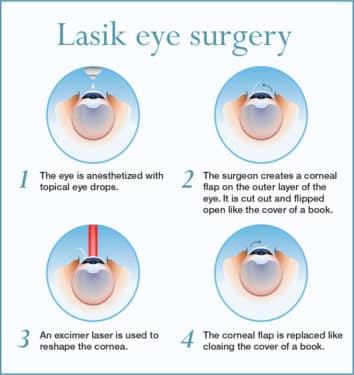Interested Regarding The Distinctions Between SMILE, LASIK, And PRK Eye Surgical Procedures?
Interested Regarding The Distinctions Between SMILE, LASIK, And PRK Eye Surgical Procedures?
Blog Article
Posted By-Foss Chase
If you've been thinking about SMILE eye surgery, you could question exactly how it compares to LASIK and PRK. Each treatment has its own collection of advantages and considerations. From quicker healing times to prospective threats, there are essential differences you ought to know prior to deciding. Comprehending these distinctions will assist you make an educated choice that lines up with your specific needs and expectations. Curious to recognize even more regarding exactly how these procedures compare in detail? Go on discovering to acquire a detailed understanding of SMILE, LASIK, and PRK.
SMILE Eye Surgical Procedure Summary
If you're taking into consideration SMILE eye surgery, you'll discover it to be a minimally intrusive procedure with a quick healing time. Throughout SMILE (Little Laceration Lenticule Removal), a laser is used to produce a small, specific laceration in the cornea to eliminate a small piece of tissue, reshaping it to remedy your vision. This differs from LASIK, where a flap is developed, and PRK, where the external layer of the cornea is entirely eliminated.
One of the essential advantages of SMILE is its minimally intrusive nature, resulting in a faster recovery procedure and less pain post-surgery. The recovery time for SMILE is relatively quick, with many people experiencing improved vision within a day or more. This makes it a popular option for those seeking a hassle-free and effective vision correction treatment. Furthermore, SMILE has been revealed to have a reduced threat of completely dry eye syndrome compared to LASIK, making it a favorable choice for individuals concerned regarding this possible adverse effects.
Differences In Between SMILE, LASIK, and PRK
When contrasting SMILE, LASIK, and PRK eye surgeries, it is necessary to recognize the distinctive methods made use of in each treatment for vision adjustment.
SMILE (Little Incision Lenticule Removal) is a minimally invasive treatment that includes producing a small incision to extract a lenticule from the cornea, reshaping it to remedy vision.
LASIK (Laser-Assisted In Situ Keratomileusis) includes producing a slim flap on the cornea, making use of a laser to reshape the underlying cells, and after that repositioning the flap.
PRK (Photorefractive Keratectomy) eliminates the external layer of the cornea prior to improving the tissue with a laser.
https://costofeyelenses87531.digitollblog.com/34948275/enhancing-athletic-performance-and-visual-acuity-with-lasik-surgery depends on the means the cornea is accessed and treated. SMILE is flapless, making it a great option for people with slim corneas or those involved in call sporting activities. LASIK supplies quick aesthetic recovery due to the flap creation, but it might position a greater risk of flap-related problems. PRK, although having a longer healing period, prevents flap-related concerns altogether.
Understanding these variations is essential in picking one of the most ideal treatment for your vision modification needs.
Benefits And Drawbacks Comparison
To assess the advantages and downsides of SMILE, LASIK, and PRK eye surgeries, it's important to take into consideration the certain benefits and potential restrictions of each procedure. SMILE surgery uses the benefit of a minimally invasive procedure, with a smaller incision and potentially quicker healing time contrasted to LASIK and PRK. It additionally decreases the risk of completely dry eye post-surgery, an usual negative effects of LASIK. Nevertheless, SMILE might have limitations in treating higher levels of myopia or astigmatism compared to LASIK.
LASIK surgery provides fast aesthetic recovery and minimal discomfort throughout the procedure. https://www.marketwatch.com/story/does-medicare-cover-cataract-surgery-01608297518 's extremely reliable in dealing with a wide variety of refractive mistakes, consisting of myopia, hyperopia, and astigmatism. Yet, Pros And Cons Of Monovision After Cataract Surgery brings a risk of flap difficulties, which can affect the corneal structure.
PRK eye surgery, while not as popular as LASIK, prevents creating a corneal flap, reducing the danger of flap-related issues. It's suitable for clients with thin corneas or uneven corneal surface areas. However, PRK has a longer recovery time and may include more discomfort during the recovery procedure.
Final thought
So, when it concerns selecting in between SMILE, LASIK, and PRK, think about it like choosing the best pair of footwear. SMILE is like a smooth, comfortable set of sneakers - quick and simple.
LASIK is much more like fashionable high heels - flashy and quickly, but with some prospective dangers.
PRK resembles durable hiking boots - reputable and long lasting, but requiring a little bit even more time and effort.
Ultimately, the very best choice depends on your private requirements and preferences.
